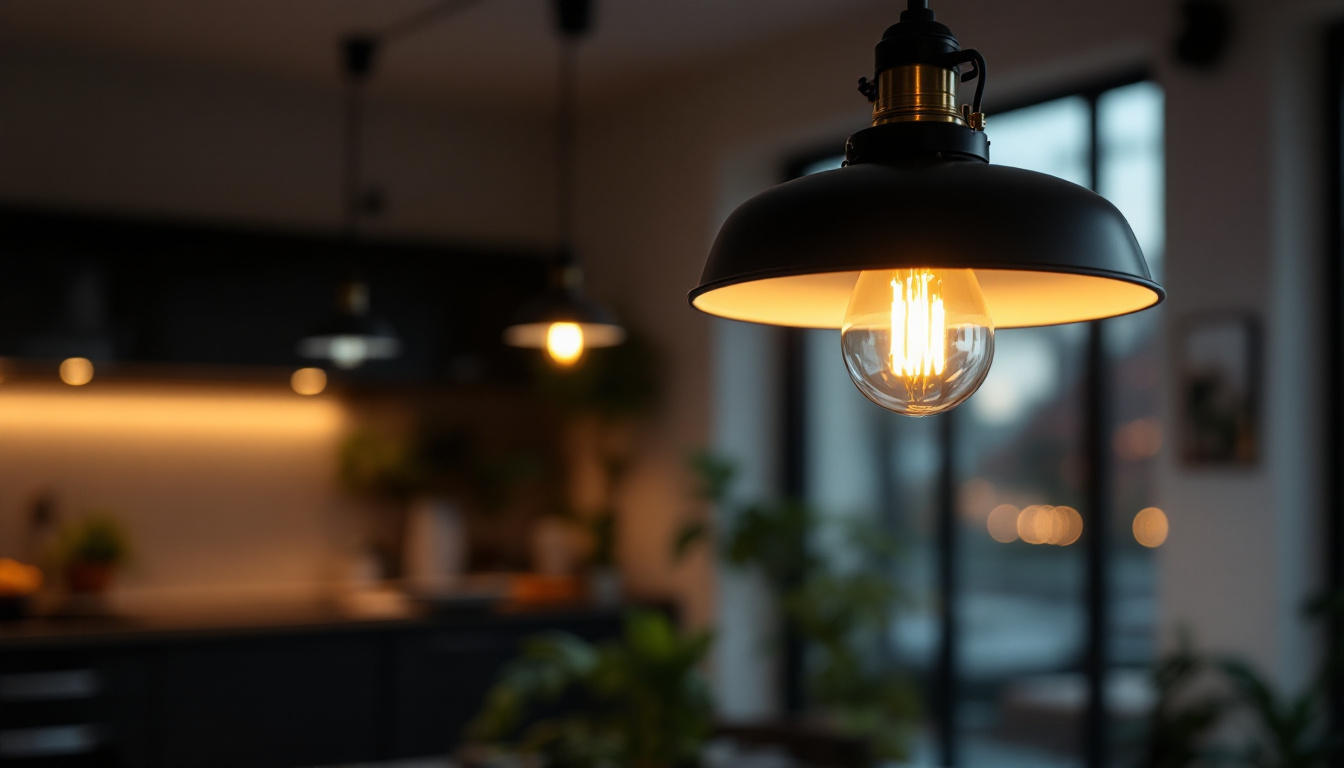

As the demand for sustainable energy solutions continues to rise, solar-powered lighting has emerged as a vital component in the toolkit of lighting contractors. These systems not only provide illumination but also contribute to energy efficiency and environmental conservation. Understanding the intricacies of solar-powered lighting is essential for contractors looking to expand their offerings and meet client needs effectively. This article provides key insights and tips to help lighting contractors navigate the world of solar-powered lights.
Before delving into the specifics of solar-powered lighting, it is crucial to grasp the fundamentals of solar energy. Solar power harnesses energy from the sun, converting it into electricity through photovoltaic cells. This energy can then be used to power various devices, including lights. The process of converting sunlight into usable energy is not only innovative but also a vital step towards sustainable living, as it taps into a renewable resource that is abundant and free.
A solar-powered lighting system typically consists of several key components: solar panels, batteries, LED lights, and a charge controller. Each part plays a crucial role in ensuring the system operates efficiently and effectively. Understanding these components helps in selecting the right system for specific needs and ensuring optimal performance.
Solar panels capture sunlight and convert it into electricity. The batteries store this energy for use during nighttime or cloudy days, allowing for consistent lighting regardless of weather conditions. LED lights are favored for their energy efficiency and longevity, often lasting up to 25 times longer than traditional incandescent bulbs. Finally, the charge controller regulates the flow of electricity, preventing overcharging and ensuring the batteries remain in optimal condition. This regulation is essential for prolonging the lifespan of the entire system and maintaining its reliability.
There are numerous advantages to using solar-powered lighting systems. Firstly, they offer significant cost savings over time, as they reduce reliance on grid electricity. Additionally, they are environmentally friendly, helping to decrease carbon footprints. By utilizing solar energy, users contribute to a reduction in greenhouse gas emissions, promoting a healthier planet for future generations.
Solar lights are also versatile and can be installed in remote locations where traditional electrical infrastructure may not be feasible. This flexibility makes them an attractive option for various applications, from residential gardens to commercial outdoor spaces. Moreover, advancements in solar technology have led to improved designs that blend seamlessly with outdoor aesthetics, providing not only functionality but also enhancing the visual appeal of landscapes. Furthermore, many solar lighting systems come equipped with motion sensors or timers, allowing for enhanced security and energy efficiency, as lights can be programmed to illuminate only when needed. This adaptability ensures that solar-powered lighting can meet a wide range of needs while promoting sustainability.
When selecting solar lighting solutions, contractors must consider several factors to ensure they meet client expectations and project requirements. The right choice can significantly impact the performance and satisfaction of the installed system.
One of the first steps in choosing solar lighting is assessing the site conditions. Factors such as geographic location, climate, and available sunlight play a critical role in determining the effectiveness of solar lights. Areas with ample sunlight will yield better results, while shaded regions may require more powerful systems or additional fixtures.
Contractors should also evaluate the specific lighting needs of the area. For instance, pathways may require lower-intensity lights, while larger spaces may need brighter fixtures to ensure adequate illumination. Furthermore, understanding the surrounding landscape is essential; for example, if there are tall buildings or trees nearby, they could obstruct sunlight and affect the performance of solar panels. This assessment can guide contractors in selecting the right fixtures that not only meet aesthetic preferences but also function optimally in their environment.
The battery capacity of a solar lighting system is another crucial consideration. It determines how much energy can be stored for use when sunlight is not available. Contractors should select batteries that can provide sufficient power for the expected duration of use, factoring in local weather patterns and seasonal variations.
Additionally, understanding the battery type—whether lithium-ion, lead-acid, or another variant—can influence performance and longevity. Each type has its advantages and disadvantages, impacting overall system efficiency and maintenance requirements. For instance, lithium-ion batteries tend to have a longer lifespan and better energy density compared to lead-acid batteries, making them a popular choice for many modern solar lighting applications. Moreover, contractors should consider the ease of replacement and recycling options for the chosen battery type, as sustainability is becoming increasingly important in today’s market.
Proper installation is vital for maximizing the performance of solar-powered lighting systems. Lighting contractors must adhere to best practices to ensure that the systems function optimally and meet safety standards.
The placement of solar panels is critical for capturing sunlight effectively. Panels should be installed in locations that receive direct sunlight for the majority of the day, avoiding any obstructions such as trees, buildings, or other structures that could cast shadows.
Contractors should also consider the angle of the solar panels. Adjusting the tilt can enhance energy absorption, especially in regions with varying sun angles throughout the year. Using adjustable mounts can facilitate this process, allowing for seasonal adjustments as needed. Additionally, it’s important to assess the local climate and weather patterns, as areas with frequent cloud cover may require more strategic placement or the use of higher-efficiency panels to compensate for reduced sunlight.
Ensuring proper wiring and connections is essential to the safety and efficiency of solar lighting systems. Contractors should use high-quality, weather-resistant materials to prevent corrosion and damage from the elements.
It is also advisable to follow manufacturer guidelines for wiring configurations. Incorrect wiring can lead to system failures or reduced performance, negating the benefits of solar technology. Furthermore, implementing a thorough testing process during installation can help identify any potential issues early on. This includes checking voltage levels and ensuring that all connections are secure and properly insulated. Regular maintenance checks after installation can also prolong the lifespan of the system and ensure it continues to operate at peak efficiency.
Regular maintenance is key to prolonging the lifespan of solar lighting systems. Contractors should educate clients on the importance of upkeep and provide guidance on how to identify potential issues.
Conducting routine inspections can help identify problems before they escalate. Contractors should recommend checking the solar panels for dirt or debris that could obstruct sunlight, as well as examining the batteries for signs of wear or damage.
Additionally, ensuring that all connections remain secure and free from corrosion is essential for maintaining optimal performance. Regularly scheduled maintenance can prevent costly repairs and replacements down the line.
Even with proper installation and maintenance, issues may arise with solar lighting systems. Contractors should be prepared to troubleshoot common problems, such as dimming lights or complete system failures.
For dimming lights, the first step is to check the battery charge level. If the batteries are low, it may indicate insufficient sunlight exposure or a failing battery. In cases of complete system failure, contractors should verify that all connections are intact and that the solar panel is functioning correctly.
Education plays a vital role in the successful implementation of solar-powered lighting systems. Contractors should take the time to inform clients about how these systems work and the benefits they offer.
One of the most compelling arguments for solar lighting is the potential for cost savings. Contractors should explain how solar lights can reduce electricity bills and lower maintenance costs over time. By providing clients with a clear understanding of the financial benefits, they can make more informed decisions about their lighting options.
In addition to cost savings, the environmental benefits of solar lighting are significant. Contractors should emphasize how solar-powered lights contribute to reducing greenhouse gas emissions and reliance on fossil fuels. This information can resonate with clients who prioritize sustainability in their purchasing decisions.
The solar lighting industry is continually evolving, with new technologies and innovations emerging regularly. For lighting contractors, staying updated with these trends is essential for maintaining a competitive edge.
New advancements in solar technology, such as improved battery efficiency and smart lighting systems, can enhance the performance and functionality of solar-powered lights. Contractors should keep abreast of these developments to offer the latest solutions to clients.
Additionally, integrating smart technology into solar lighting systems can provide clients with greater control over their lighting, allowing for features such as remote access and automated scheduling. This added convenience can be a selling point for many customers.
Joining industry associations and attending trade shows can provide valuable networking opportunities for lighting contractors. These events often feature workshops and seminars focused on the latest trends and best practices in solar lighting.
By engaging with peers and industry leaders, contractors can gain insights that can enhance their service offerings and improve their overall business operations.
Solar-powered lighting presents a unique opportunity for lighting contractors to expand their service offerings while contributing to a more sustainable future. By understanding the fundamentals of solar technology, selecting the right systems, adhering to best installation practices, and educating clients, contractors can position themselves as leaders in this growing market.
As the demand for renewable energy solutions continues to increase, staying informed about industry trends and emerging technologies will be crucial. By embracing solar lighting, contractors not only meet client needs but also play a significant role in promoting environmental stewardship and energy efficiency.
Ready to harness the power of the sun and light up your projects with confidence? At LumenWholesale, we provide lighting contractors like you with the highest quality solar-powered lighting solutions at unbeatable wholesale prices. Say goodbye to local distributor markups and hello to spec-grade products that meet the highest industry standards. With our hassle-free bulk buying and free shipping, you’ll enjoy premium lighting at the best value — all without hidden fees or compromises. Elevate your lighting game and contribute to a sustainable future with LumenWholesale. Discover our extensive selection and take the next step in energy-efficient lighting by visiting Wholesale Lighting at the Best Value.

Discover the transformative power of black industrial pendant lights in energy-efficient lighting.

Discover expert tips and innovative strategies for lighting contractors to enhance cabin ambiance.

Discover essential insights into electrical outlets that every lighting contractor should master.

Discover why lighting contractors should prioritize commercial hanging LED lights in their projects.
Get notified when NEW deals are released.
Optimize your budget with wholesale discounts.
Only top-quality, specification-grade lighting products.
No additional costs at checkout - what you see is what you pay.
We understand the unique needs of contractors.